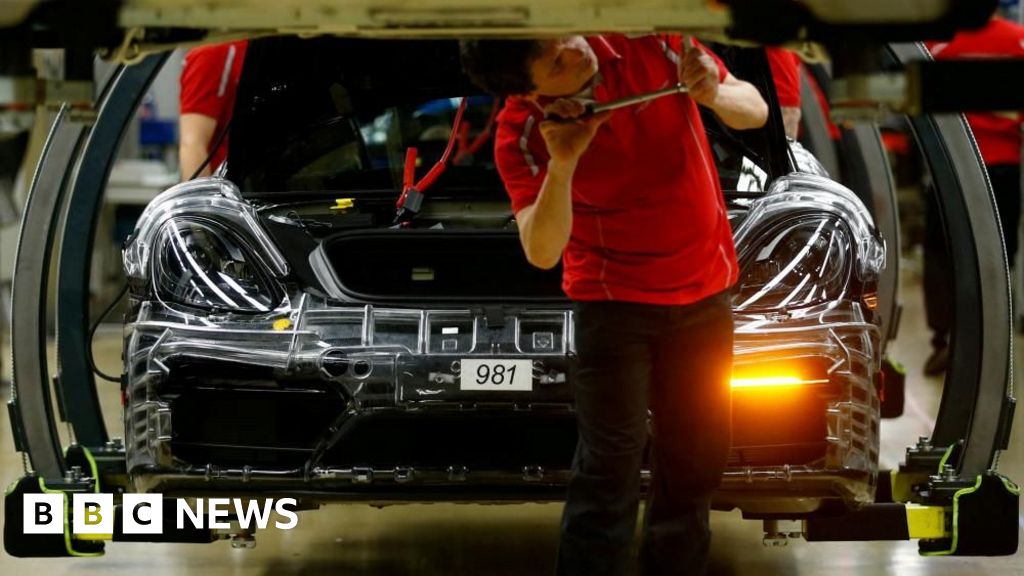
Need to get to the airport? Soon you can take an air taxi.
- Science
- March 25, 2024
- No Comment
- 139
Last November, a small, white, oblong helicopter with four passenger seats and six whirring electric engines took off from the Downtown Manhattan Heliport.
Several people, including Mayor Eric Adams, watched as the air taxi known as an eVTOL — an electric vertical takeoff and landing aircraft — flew silently, undetected by nearby pedestrians along the East River.
“To bring electric flight and the benefits of electric flight here is a dream come true,” said JoeBen Bevirt, the CEO of Joby Aviation, to the crowd. Joby is just one of dozens of firms around the world betting on eVTOLS. Their backers include some of aviation’s biggest names, such as Delta Air Lines, United Airlines and Embraer.
Many airlines and aviation companies are experimenting with new technologies not only to manage relentless economic pressure to be an affordable choice for transportation but also to be more environmentally friendly. Besides the move to electric engines, airlines are investigating options for fuel such as hydrogen and repurposed fuels and the reemergence of supersonic flight. Investors have spent an estimated $22.2 billion, according to a report published by the McKinsey Center for Future Mobility. Most companies aim to fly their new offerings in noticeable numbers by the end of this decade — or relegate them to the trash heap of history while they pursue other options.
“You need to have a similar revolution as [with] the electric car,” said Anders Forslund, co-founder and CEO of the Swedish company Heart Aerospace.

Short routes could be on an electric plane
Modern airplanes are more efficient and safer than they were when the 707, Boeing’s first jetliner, debuted in 1958. Boeing’s latest long-range model, the 787, looks similar even if the engineering is much improved.
“This is an industry based upon remarkable, sustained, incremental progress,” said Richard Aboulafia, a managing director at AeroDynamic Advisory, in explaining the glacial pace of change in design.
Heart Aerospace intends to change that reputation. Engineers are developing a 30-seat electric turboprop plane, the ES-30, with backing from the likes of Air Canada, Saab and United. The plan is to be operational by 2027. While the ES-30 looks like the prop planes that already fly passengers to small towns around the world, it could be revolutionary if certified: It does not emit carbon while it flies, and it is quiet. The lower cost of operating the ES-30 could also help airlines reopen routes where flights disappeared years ago.
Electric planes have their disadvantages, too. Battery capacity, despite recent improvements, does not equal the energy density of jet fuel. Installing a larger battery would add significant weight to a plane. To compensate, the planes would have to reduce the number of passenger seats to roughly 40 to 50. Last year, domestic flights averaged 132 seats per flight, according to the aviation data analytics firm Cirium Diio.

Flying range would also be limited. An electric plane must fly within a few hundred miles; the average distance flown today is 770 miles.
“In 2030, we’re not going to be able to cover all the [airline] routes, but we’re going to be able to cover the routes up to 500 miles with reserves,” said Kyle Clark, co-founder and CEO of Beta Technologies.
“We’ve already seen [batteries] doubling in energy density,” continued Clark. The company first flew an electric test plane in 2017, proving that battery-powered planes can fly. Certification of its production model, the Alia, is underway.
The debate around eVTOLs is different. Delta Air Lines, in partnership with Joby, plans to offer a “premium ‘Home to Seat’” service to connect heliports with nearby major airports once certified by the Federal Aviation Administration.
The companies estimate that about 1,000 people a day would choose eVTOLS instead of automobiles to travel to and from the airport. This number is equivalent to just 2 percent of the roughly 18.2 million travelers the airline managed at New York’s John F. Kennedy International Airport during the year ending in November, based on the latest U.S. Bureau of Transportation Statistics data.
“Moving around people with more means to access mobility and, in some cases, bypass congestion raises equity concerns,” said Adam Cohen, a senior researcher looking at transportation issues at the University of California at Berkeley.
Helicopter flights today between Manhattan and JFK and Newark airports cost at least $195 per person on Blade. Fares for the Home to Seat service have not been disclosed yet.

“From an engineering and technical perspective we can design these [options],” continued Cohen. “It really comes down to, from a policy perspective, how do we leverage it to maximize public good.”
The first commercial eVTOL flights could be in operation this summer at the 2024 Olympic Games in Paris. Certification delays, however, might nix that dream. And, maybe as soon as 2025, Joby and Delta hope to launch flights in New York and Los Angeles; United and Archer Aviation plan to do the same in Chicago.
Hydrogen emerges again as an aviation fuel
Hydrogen, depending how it is sourced and produced, can be completely free of carbon emissions. It also weighs less than most electric batteries, allowing the plane to store more energy for longer flights. The downside for using liquid hydrogen is space: The fuel requires more space to carry the amount needed to power most commercial aircraft, which means less space for paying passengers.
“Hydrogen has always been the holy grail of aviation fuels,” said Paul Eremenko, co-founder and CEO of Universal Hydrogen. Hydrogen is the lightest element and can power a fuel cell that generates electricity. The company, which is backed by American Airlines, JetBlue Ventures and others, is developing a hydrogen fuel-cell system that could be retrofitted on existing prop planes.
Universal Hydrogen began testing its fuel cells on a 40-seat plane last year in Moses Lake, Wash. Flight tests have since moved to Mojave, Calif., with an aim to earn certification in 2026.

European aerospace giant Airbus is considering hydrogen fuel as well for its planes. In 2020, Airbus engineers began developing a hydrogen-powered aircraft known as ZEROe with a plan to be operational by the middle of the 2030s. The initial concepts include four types of planes: two small planes with fewer than 100 seats and two larger aircraft with more than 200 seats.
Air New Zealand is betting on all of the new technologies, from electric to hydrogen, for its future fleet. The airline wants to begin flying a low-emission plane on domestic routes around 2030. It will begin testing a cargo plane within two years. The company is partnering with Heart Aerospace and Universal Hydrogen, among others.
“We need to do what we can to support all the technology because we’re going to need it all,” said Kiri Hannifin, chief sustainability officer of Air New Zealand. “Next-generation aircraft will be part of the soul for aviation.”
Supersonic renaissance
Super-fast trips between New York and London may soon be a possibility again.
Boom Supersonic, among a new crop of supersonic-aircraft start-ups, has garnered significant industry support from the likes of American Airlines and defense contractor Northrop Grumman for its Overture jet. If all goes according to plan — and it has not so far — the planes with 64 to 80 passengers could be streaking across the sky at twice the speed of modern jets by the early 2030s. Even the earsplitting sonic boom that relegated the Concorde, a supersonic commercial plane decommissioned in 2003, to oceanic routes only, could be softened if research efforts underway at NASA succeed.
United Airlines was the first major airline to commit to the Overture. Andrew Chang, managing director of the airline’s venture capital arm, United Airlines Ventures, said the airline regularly gets requests from corporate customers on the plane’s status. “There are nuanced markets that are right for that type of long-haul efficient travel,” Chang said.

Supersonic speed, however, requires a lot of energy. By Boom’s own estimates, the Overture will burn nearly three times as much fuel per seat on an average transatlantic flight than the latest wide-body jets from Airbus and Boeing, at a time when the aviation industry is focused on cutting — not growing — emissions.
“It’s just true that going faster requires more energy,” said Blake Scholl, CEO of Boom. “We can work on the energy efficiency. … But we need to find low-cost and climate-friendly solutions for how to power the airplane.”
The solution, according to Scholl, is sustainable aviation fuels, like those made from used cooking oil, that could drastically cut emissions. The fuels, however, are currently available only in small quantities and several times more expensive than fossil fuels.
There is also the question of market. Where are there enough travelers willing to pay for speed? The Concorde flew in only two markets with enough customers willing to pay: London and Paris to New York. Scholl said tickets on the Overture would be comparable to business-class fares today.
The cheapest one-way business-class ticket between New York and London in early March was about $2,200, according to Google Flights.
Not everyone is convinced that travelers, or their companies, will pay premium dollars for speed.
“Technology has very badly moved against supersonics,” said Aboulafia, the AeroDynamic Advisory managing director, referring to the advent of virtual meetings and their explosive growth during the coronavirus pandemic.
“You had no idea what was happening on the ground,” continued Aboulafia. “Now, you’re constantly connected in real time, so the premium you place on speed is diminished.”
About this story
Editing by Bronwen Latimer. Copy editing by Mike Cirelli. Design and development by Audrey Valbuena. Design editing by Betty Chavarria. Photo editing by Haley Hamblin, Monique Woo and Robert Miller. Project development by Evan Bretos and Hope Corrigan. Project editing by Marian Chia-Ming Liu.
#airport #air #taxi









